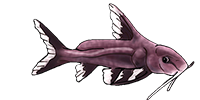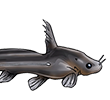Why fish/fishtank relation if i can not define fish multiple times
-
Koen
- Posts: 9
- Joined: 02 Oct 2015, 14:53
- My cats species list: 95 (i:38, k:23)
- My aquaria list: 42 (i:7)
- My BLogs: 1 (i:0, p:2)
- Spotted: 35
- Location 1: Bucharest
- Location 2: Romania
- Interests: Photography
Bee keeping
Tropical Fish keeping
Why fish/fishtank relation if i can not define fish multiple times
Hi,
I have a lot of tanks, and a lot of groups
I have 236 SW in tank A, I can not define a group of 236 SY in tank B
In tank C I have a breeding group, I can not assign the youngsters of that group to tank D
To say it in DB language: you defined fish-tank relation as 1-to-many while it should be a many-to-many relation to be realistic and workable, what after all was the intention of the whole setup.
I have a lot of tanks, and a lot of groups
I have 236 SW in tank A, I can not define a group of 236 SY in tank B
In tank C I have a breeding group, I can not assign the youngsters of that group to tank D
To say it in DB language: you defined fish-tank relation as 1-to-many while it should be a many-to-many relation to be realistic and workable, what after all was the intention of the whole setup.
L046 - L134 - L144 - L159 - L168 - L181 - L183 - L236SW/SY - L260 - L262 - L265 - L267 - L287 - L297- L306 - L397 - L399 - L471 - H.Altamira sp. - H. real inspector
- Jools
- Expert
- Posts: 16313
- Joined: 30 Dec 2002, 15:25
- My articles: 198
- My images: 949
- My catfish: 237
- My cats species list: 88 (i:13, k:2)
- My BLogs: 7 (i:10, p:167)
- My Wishlist: 23
- Spotted: 453
- Location 1: Middle Earth,
- Location 2: Scotland
- Interests: All things aquatic, Sci-Fi, photography and travel. Oh, and beer.
- Contact:
Re: Why fish/fishtank relation if i can not define fish multiple times
Yes, you're right.
The idea was that the species was the entire population that you had. Then you could split it up into different tanks. The usecase being that often you will move a particular fish from one place to another or grow out fry in new tanks. I never got around to that.
So, folks with fishrooms tend to manage populations. Folks with one tank tend to manage the tank with a bunch of species in it. As you say, it's not perfect.
In DB language you only have one species. It is the populations of that species that are many to many, and in your/L236 case variants of that species form different populations. I tried to keep it simple for the majority I guess.
It gets VERY complex when, for example, in the future L066, L236 and L333 all get described as one species. So, as I say, I kept it simple.
Jools
The idea was that the species was the entire population that you had. Then you could split it up into different tanks. The usecase being that often you will move a particular fish from one place to another or grow out fry in new tanks. I never got around to that.
So, folks with fishrooms tend to manage populations. Folks with one tank tend to manage the tank with a bunch of species in it. As you say, it's not perfect.
In DB language you only have one species. It is the populations of that species that are many to many, and in your/L236 case variants of that species form different populations. I tried to keep it simple for the majority I guess.
It gets VERY complex when, for example, in the future L066, L236 and L333 all get described as one species. So, as I say, I kept it simple.
Jools
Owner, AquaticRepublic.com, PlanetCatfish.com & ZebraPleco.com. Please consider donating towards this site's running costs.
- Kirin
- Posts: 40
- Joined: 06 Jan 2018, 20:20
- My cats species list: 14 (i:2, k:0)
- Spotted: 10
- Location 1: United Kingdom
- Location 2: Bristol
- Interests: Just fishes, my career and hobby.
Re: Why fish/fishtank relation if i can not define fish multiple times
I think I understand what you are saying? Treating populations as isolated entities?
I personally think that is a good idea, when it comes to individual populations individual populations can be as distinct genetically and morphologically as different species. In fish biology we don't really use subspecies so it's not really displayed well without distinct names. It's reasonably respected in some groups like I hear livebearers and killifish breeders keep populations separate. We can't just look at morphology, there are great examples of how populations vary over space, Symphysodon, discus are a great example for me and so much so they have been considered many more species. Baryancistrus maybe as well but I need to read that paper more in depth.
The difficulty is if you get a gradient where the furthest away cannot hybridise but there is general mixing between some localities. There also really variable species even within the same locality, it's difficult with fishes though because from my understanding fishermen can go to multiple spots for the same fish then put them in the same batch.
It's a really interesting topic that should be discussed.
I like to think of it like how zoos manage species and variants, they wont cross them unless they really have to. For example I believe the Prezewalski's horse went down to something like 13 individuals one of which was likely a hybrid so it was either save the species or loose potentially a precious genetic asset. The other aspect is many will breed species as reservoirs but unless there is careful records and tracking of individuals they aren't much use. I suspect hybridising is more common then we think and I would no longer say captive bred A. dolichopterus are the actual fish, L181/l071 is likely a hell of a hybrid of any spotted Ancistrus that will breed together. So these records might be important. The crossing of wild populations will make the captive bred populations generally a last ditch attempt, even worse subconscious selective breeding. Our fishes are evolved for captivity, those that aren't wouldn't survive it.
L236SW and other L236 captive bred variants I don't see the need to keep them isolated unless selectively breeding them.
I personally think that is a good idea, when it comes to individual populations individual populations can be as distinct genetically and morphologically as different species. In fish biology we don't really use subspecies so it's not really displayed well without distinct names. It's reasonably respected in some groups like I hear livebearers and killifish breeders keep populations separate. We can't just look at morphology, there are great examples of how populations vary over space, Symphysodon, discus are a great example for me and so much so they have been considered many more species. Baryancistrus maybe as well but I need to read that paper more in depth.
The difficulty is if you get a gradient where the furthest away cannot hybridise but there is general mixing between some localities. There also really variable species even within the same locality, it's difficult with fishes though because from my understanding fishermen can go to multiple spots for the same fish then put them in the same batch.
It's a really interesting topic that should be discussed.
I like to think of it like how zoos manage species and variants, they wont cross them unless they really have to. For example I believe the Prezewalski's horse went down to something like 13 individuals one of which was likely a hybrid so it was either save the species or loose potentially a precious genetic asset. The other aspect is many will breed species as reservoirs but unless there is careful records and tracking of individuals they aren't much use. I suspect hybridising is more common then we think and I would no longer say captive bred A. dolichopterus are the actual fish, L181/l071 is likely a hell of a hybrid of any spotted Ancistrus that will breed together. So these records might be important. The crossing of wild populations will make the captive bred populations generally a last ditch attempt, even worse subconscious selective breeding. Our fishes are evolved for captivity, those that aren't wouldn't survive it.
L236SW and other L236 captive bred variants I don't see the need to keep them isolated unless selectively breeding them.
Rebecca
Crazy catfish lady
Crazy catfish lady
-
vorka
- Posts: 4
- Joined: 06 Aug 2009, 14:52
- My cats species list: 9 (i:0, k:8)
- My aquaria list: 3 (i:3)
- My Wishlist: 1
- Spotted: 17
- Location 1: Rijeka
- Location 2: Croatia
Re: Why fish/fishtank relation if i can not define fish multiple times
I was just searching how to separate the same species in different tanks when I stumbled upon this topic. It would be cool to add this option, because, for example, now I want to add juveniles of the same species to another tank and also to mark the date when I got them, but the only thing I can do is just write in how many juveniles I got to the tank that already keeps that species.
-
OregonOutdoorsChris
- Posts: 104
- Joined: 07 Apr 2016, 18:00
- My images: 3
- My cats species list: 24 (i:23, k:8)
- My aquaria list: 11 (i:11)
- My BLogs: 6 (i:21, p:380)
- My Wishlist: 43
- Spotted: 2
- Location 1: Portland, Oregon
- Location 2: USA
Re: Why fish/fishtank relation if i can not define fish multiple times
You can sort of accomplish this in the existing scheme.
Create population1.
Mark population1 as no longer kept.
Create population 2.
Go back and remove the "Stop Date" from population1.
Now you have two populations of the same species which can be kept in different tanks.
Create population1.
Mark population1 as no longer kept.
Create population 2.
Go back and remove the "Stop Date" from population1.
Now you have two populations of the same species which can be kept in different tanks.
-
vorka
- Posts: 4
- Joined: 06 Aug 2009, 14:52
- My cats species list: 9 (i:0, k:8)
- My aquaria list: 3 (i:3)
- My Wishlist: 1
- Spotted: 17
- Location 1: Rijeka
- Location 2: Croatia
Re: Why fish/fishtank relation if i can not define fish multiple times
Thanks, I'll give it a try.




